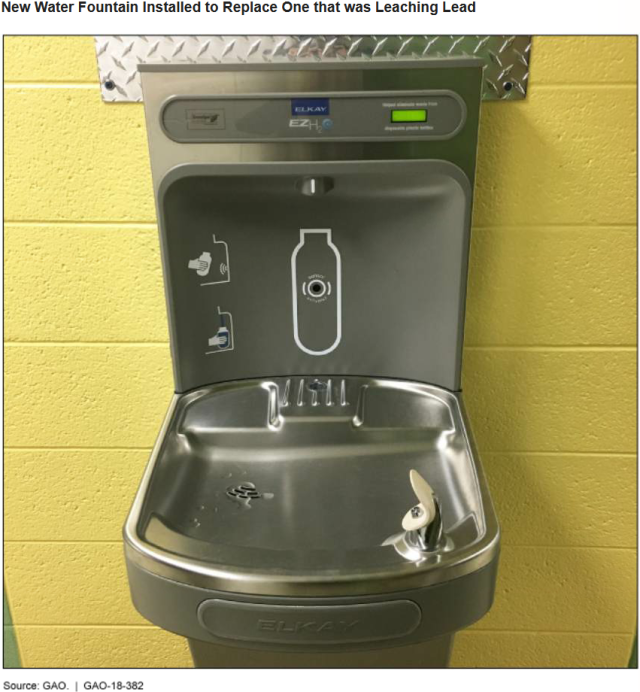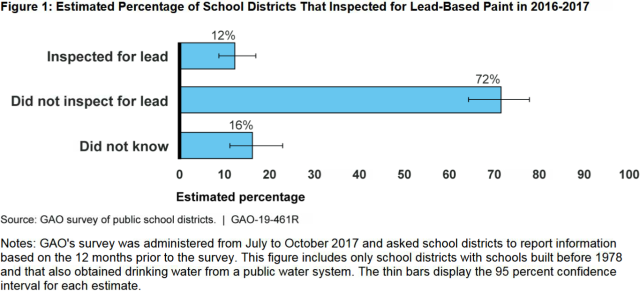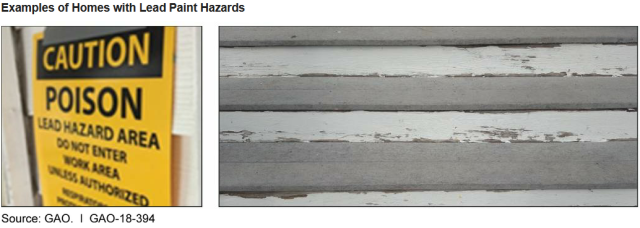Lead Safety at Home and in School
Exposure to lead can harm a child’s brain, growth, behavior, and ability to learn. No safe blood lead level in children has been identified, according to the Centers for Disease Control and Prevention.
The most common source of lead exposure for children comes from lead paint hazards in homes and buildings (such as schools) built before 1978—the year the U.S. government restricted the sale of lead-based paint.
For National Lead Poisoning Prevention Week, today’s WatchBlog explores some of our work related to lead safety in homes and schools.
Lead in school drinking water
School drinking water is a daily source of water for more than 50 million children enrolled in public schools. Although lead pipes and solder weren’t commonly used after 1986, fountains and other fixtures were allowed to have up to 8% lead until 2014.
The potential for lead to leach into water increases the longer the water remains in contact with lead materials—a particular concern for schools, which have extended vacations during which water in the plumbing system remains stagnant.
We surveyed school districts across the country and found that 43% of districts, serving 35 million students, tested for lead. Of those, 37% districts found elevated levels and took steps to reduce or eliminate exposure.
We made several recommendations to promote testing and improve guidance for school districts. Check out our podcast with Jackie Nowicki, a director in our Education, Workforce, and Income Security team, to hear more about our findings.
Lead in school paint
In schools, lead dust can come from disturbing lead paint during renovations, deteriorating lead paint, and lead-contaminated soil.
We surveyed schools on how they deal with lead paint and found that about 12% of school districts nationwide inspected for lead-based paint in 2016-2017. About half of those school districts found lead-based paint, and all of them took action to reduce or eliminate it or had plans to do so.
Lead paint in homes
In homes, infants and young children are especially at risk of lead exposure because they often crawl on the floor and frequently ingest nonfood items.
We reviewed the Department of Housing and Urban Development’s efforts to reduce lead exposure in housing, including its lead-reduction grants to state and local jurisdictions. From 2013-2017, HUD awarded over $500 million in these grants—71% of which were awarded to locations in the Northeast and Midwest, which are known to have a high prevalence of lead paint hazards.
We found that HUD could improve its processes for identifying high risk areas for lead paint hazards and recommended, among other things, that it strengthen its oversight of public housing authorities’ compliance with lead paint regulations.
Lead safety in your home
If you think your home has lead-based paint, the EPA recommends a number of steps you can take to protect your family from lead hazards. These include:
- Keep painted surfaces in good condition to minimize deterioration
- Regularly clean floors, window sills, and other surfaces where lead dust can collect
- If you rent, talk to your landlord about fixing surfaces with peeling or chipping paint
- If you own, when renovating, repairing, or repainting, hire only EPA- or state-approved Lead-Safe certified renovation firms
- Consult your healthcare provider about testing your children for lead. Your pediatrician can conduct a simple blood test.
For the full list of steps, see EPA’s June 2017 brochure.
- Comments on GAO’s WatchBlog? Contact blog@gao.gov.











